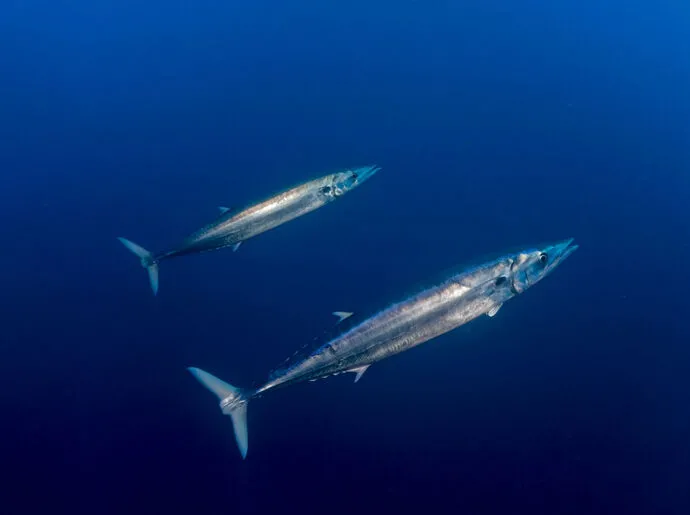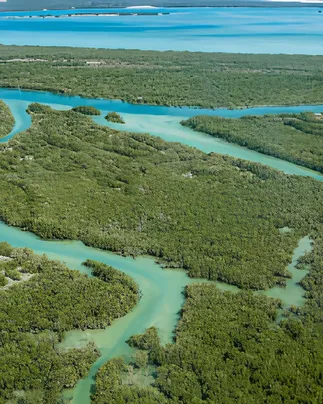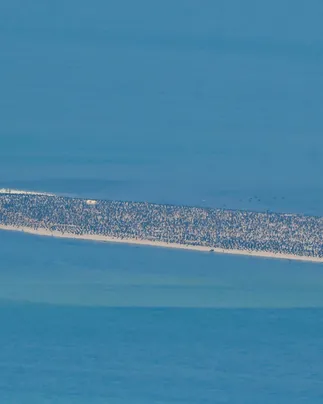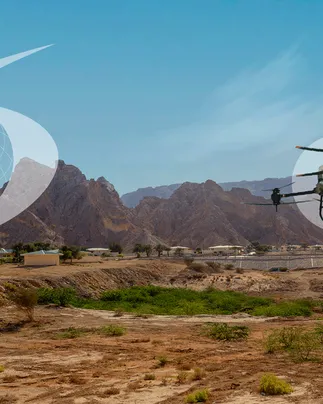Environment Agency – Abu Dhabi (EAD) is implementing a satellite tracking project for kingfish, in cooperation with United Arab Emirates University (UAEU), with the aim of managing migratory fisheries in Abu Dhabi. This will be achieved by studying the behaviours and migration patterns of kingfish in the waters of the Arabian Gulf and identifying their biological characteristics, while also highlighting their breeding seasons in Abu Dhabi’s waters.
The kingfish is considered a migratory pelagic (open water) fish that exists in small groups at different depths and moves from one area to another in search of food. It was chosen for the study because of its high economic, nutritional and cultural value, being the most caught migratory species in Abu Dhabi. Angling for kingfish is very popular among both enthusiasts and professionals, with many recreational kingfish fishing tournaments organised in the emirate with the aim of enhancing the cultural heritage and the status of marine fishing.
The technology of tracking fish via satellite is a modern method for studying the migration paths and patterns of fish and migratory species. The tracking device is quickly attached to the dorsal fin of the fish, to avoid exposing it to stress and to ensure the success of the process, after which it is returned to the water to complete its life cycle. The device begins communicating with the satellite and sending data once it automatically separates from the fish after six months or according to a pre-programmed time period.
His Excellency Ahmed Al Hashemi, Executive Director of the Terrestrial and Marine Biodiversity Sector at EAD, said: “The project to track kingfish by satellite is considered the first of its kind in the world, as there are other similar projects that have been implemented to track sharks, tuna, and yellowtail kingfish and some types of large fish in Norway, Australia and the United States.
“However, there are no previous studies in the world to track kingfish, and this may be due to the difficulty associated with catching this type and installing the device on its body, as doing so requires great speed and care to ensure the success of the process.
“The kingfish's smooth body and relatively small size compared to sharks and tuna increases the difficulty of attaching the tracker, and fishing operations for scientific research purposes differ greatly from the traditional fishing practices.”
The process of collecting data on fish movement begins after the device automatically separates from the fish’s body and floats to the surface of the water after a pre-set six-month period, or if it becomes detached. The device then begins communicating with the satellite, broadcasting important information about the fish’s path from its launch point. The technical team then begins its efforts to retrieve the device from the water by searching for it using geographical positioning systems and navigational goniometers to obtain all recorded information and readings.
Eight tracking devices have been installed on kingfish and launched in Abu Dhabi’s waters out of a total of 18 devices allocated for this project, with the remaining devices to be installed at the beginning of the 2023 kingfish season. This will help obtain the necessary data for the study and prepare the final report on the project’s outcomes, with recommendations for managing fishery resources and regulating the exploitation of migratory species in the emirate’s waters.
Studies show that one of the devices, after it separated from a fish 100km away from its launch point, showed the fish had travelled a distance of up to 350km, which is equivalent to 40km per day, and at a speed of 1.8km per hour. The kingfish is a relatively fast-moving fish compared to other species studied for movement patterns, such as marlin, which speed has been recorded at 0.8km/hour. The device on the kingfish recorded more than 2,000 different readings during the tracking period, which lasted for nine days, or the equivalent of 194 hours.









